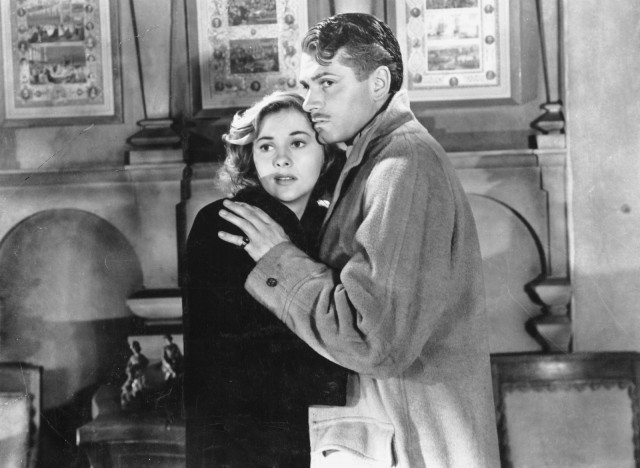
Joan Fontaine and Laurence Olivier play lovers haunted by the past in REBECCA
REBECCA (Alfred Hitchcock, 1940)
Film Forum
209 West Houston St.
Sunday, March 2, 1:30, 5:50, 8:30, and Monday, March 3, 1:10, 3:50, 8:35
The Complete Hitchcock: February 21 – March 27
The Hitchcock 9: February 21 – May 4
212-727-8110
www.filmforum.org
 “Last night I dreamt I went to Manderley again.” The opening line of Rebecca, Alfred Hitchcock’s first Hollywood picture, instantly sends chills down the spine of anyone who has seen the film or read the book on which it is based, Daphne du Maurier’s 1938 novel of the same name. The line is spoken in voice-over by the second Mrs. de Winter (Joan Fontaine), so haunted by the first Mrs. de Winter, the recently deceased Rebecca, that she never even gets a first name, depriving her of her own identity. While serving as a paid companion to snooty wealthy matron Edythe Van Hopper (Florence Bates) on a trip to Monte Carlo, the orphaned young woman meets the dapper but dark Maxim de Winter (Laurence Olivier), an elegant widower who takes a liking to her. Following a whirlwind courtship, they are married, and Maxim takes his mousey bride to his castlelike Cornwall estate, Manderley, where she is constantly compared to and overshadowed by the ghost of Rebecca, idolized as the perfect woman by the large staff, in particular the grim housekeeper, Mrs. Danvers (Judith Anderson), who relentlessly tortures the second Mrs. de Winter. “You wouldn’t think she’d been gone so long, would you?” Mrs. Danvers tells her. “Sometimes, when I walk along the corridor, I fancy I hear her just behind me. That quick light step, I couldn’t mistake it anywhere. It’s not only in this room, it’s in all the rooms in the house. I can almost hear it now.” But just as the second Mrs. de Winter finally tries to establish herself — “I am Mrs. de Winter now” she declares to Mrs. Danvers — Maxim shares a shocking truth about the first Mrs. de Winter that turns her world inside out.
“Last night I dreamt I went to Manderley again.” The opening line of Rebecca, Alfred Hitchcock’s first Hollywood picture, instantly sends chills down the spine of anyone who has seen the film or read the book on which it is based, Daphne du Maurier’s 1938 novel of the same name. The line is spoken in voice-over by the second Mrs. de Winter (Joan Fontaine), so haunted by the first Mrs. de Winter, the recently deceased Rebecca, that she never even gets a first name, depriving her of her own identity. While serving as a paid companion to snooty wealthy matron Edythe Van Hopper (Florence Bates) on a trip to Monte Carlo, the orphaned young woman meets the dapper but dark Maxim de Winter (Laurence Olivier), an elegant widower who takes a liking to her. Following a whirlwind courtship, they are married, and Maxim takes his mousey bride to his castlelike Cornwall estate, Manderley, where she is constantly compared to and overshadowed by the ghost of Rebecca, idolized as the perfect woman by the large staff, in particular the grim housekeeper, Mrs. Danvers (Judith Anderson), who relentlessly tortures the second Mrs. de Winter. “You wouldn’t think she’d been gone so long, would you?” Mrs. Danvers tells her. “Sometimes, when I walk along the corridor, I fancy I hear her just behind me. That quick light step, I couldn’t mistake it anywhere. It’s not only in this room, it’s in all the rooms in the house. I can almost hear it now.” But just as the second Mrs. de Winter finally tries to establish herself — “I am Mrs. de Winter now” she declares to Mrs. Danvers — Maxim shares a shocking truth about the first Mrs. de Winter that turns her world inside out.
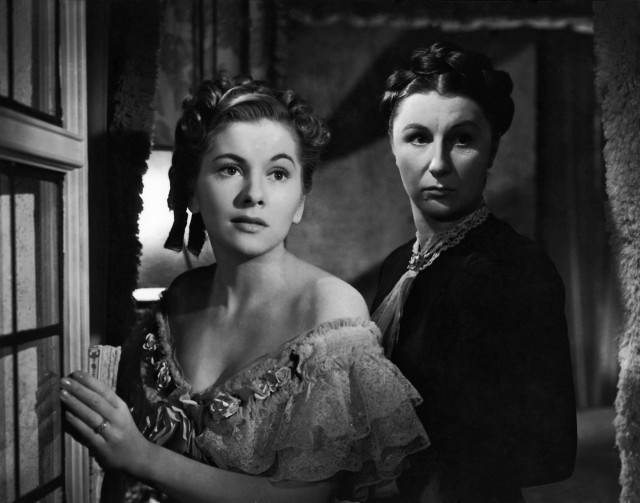
The second Mrs. de Winter (Joan Fontaine) is mercilessly tortured by Manderley housekeeper Mrs. Danvers (Judith Anderson)
Nominated for eleven Oscars and winner of two (for Best Picture and Best Black and White Cinematography, by George Barnes), Rebecca is a gripping Gothic thriller about fear, obsession, love, identity, and memory. Although the film is filled with Hitchcockian touches, producer David O. Selznick had a large hand in the final version, reediting and supervising several reshoots to keep closer to du Maurier’s novel. From the script, written by Robert E. Sherwood and Joan Harrison based on Philip MacDonald and Michael Hogan’s adaptation, to Franz Waxman’s dramatic score, Joseph B. Platt and Howard Bristol’s interiors, and the uncredited costumes, Rebecca is a masterpiece of precision, with fascinating undertones of incest (Olivier is more like a father to Fontaine than a lover; George Sanders plays a cad who is supposedly a cousin of Rebecca’s) and lesbianism (Mrs. Danvers’s devotion to Rebecca appears to be more than just that of a loyal employee). It’s also hard not to watch it today without thinking of such later 1940s films as Gaslight and Citizen Kane, especially that ending. An oft-delayed, financially troubled Broadway musical version has been in the works for several years, promising “The Manderley Experience,” but it’s going to be tough to top du Maurier’s book and Hitchcock’s film when it comes to telling this multilayered story of mystery and romance. Rebecca, which also stars Nigel Bruce as Maxim’s brother, Giles, Gladys Cooper as Giles’s wife, Beatrice, Reginald Denny as the manager of Manderley, and Leo G. Carroll as Rebecca’s doctor, is screening March 2–3 as part of Film Forum’s “The Complete Hitchcock,” which runs through March 27 and includes all of the Master of Suspense’s feature narratives; the series also encompasses “The Hitchcock 9,” which continues through May 4 and consists of all nine of Hitch’s surviving silents, each one accompanied by Steve Sterner on piano. In addition, the Paley Center will be hosting “The Complete Hitchcock: Television” on March 29–30 and April 5–6, consisting of all episodes of Alfred Hitchcock Presents that Sir Alfred directed, as well as documentaries, interviews, and other bonuses.
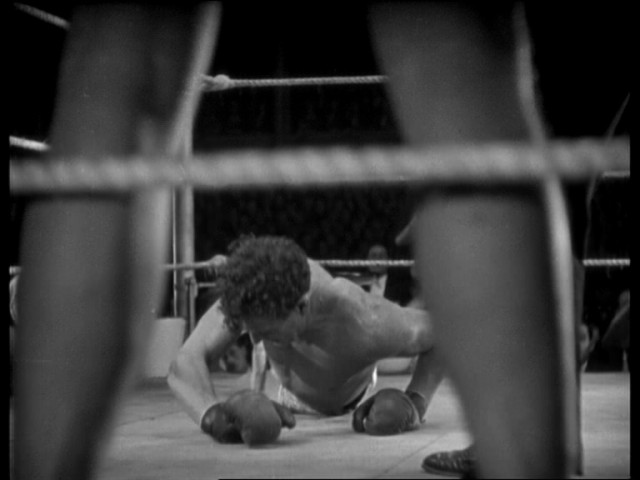
 When one thinks of Alfred Hitchcock, such psychological thrillers as North by Northwest, Psycho, Vertigo, Notorious, and Rear Window come to mind, not The Manxman, Easy Virtue, The Pleasure Garden, and The Farmer’s Wife. But it is these early, British silent films that are the focus of Film Forum’s “The Hitchcock 9,” which is part of the larger series “The Complete Hitchcock,” consisting of every other picture Sir Alfred made, including those abovementioned films. The dual festival features DCP restorations of nine romantic melodramas made by the Master of Suspense, each one with live musical accompaniment by pianist Steve Sterner. The series continues with 1927’s The Ring, a tantalizing tale of a love triangle set in the world of boxing, a favorite sport of Hitchcock’s. When Bob Corby (Ian Hunter) shows up at a county fair and takes a liking to Mabel (Lillian Hall-Davis), who sells tickets to see her fiance, “One-Round” Jack Sander (Carl Brisson), battle all comers for a cash prize, Corby decides to get in the ring with Sander to impress Mabel; little do they know that Corby is a professional. Soon the two men are also fighting outside the ring, to win the heart of their beloved. Comic relief is supplied by Gordon Harker as Jack’s trainer, who makes some very funny faces throughout. One can see Hitchcock’s visual style emerging in The Ring, as he employs little dialogue in favor of dramatic montages, ghostly superimpositions, and shadowy lighting. The intriguing work, produced at Elstree Studios and the first film to be released by Gainsborough Pictures, also deals with issues of class and financial success, themes that will become prevalent in much of Hitchcock’s oeuvre.
When one thinks of Alfred Hitchcock, such psychological thrillers as North by Northwest, Psycho, Vertigo, Notorious, and Rear Window come to mind, not The Manxman, Easy Virtue, The Pleasure Garden, and The Farmer’s Wife. But it is these early, British silent films that are the focus of Film Forum’s “The Hitchcock 9,” which is part of the larger series “The Complete Hitchcock,” consisting of every other picture Sir Alfred made, including those abovementioned films. The dual festival features DCP restorations of nine romantic melodramas made by the Master of Suspense, each one with live musical accompaniment by pianist Steve Sterner. The series continues with 1927’s The Ring, a tantalizing tale of a love triangle set in the world of boxing, a favorite sport of Hitchcock’s. When Bob Corby (Ian Hunter) shows up at a county fair and takes a liking to Mabel (Lillian Hall-Davis), who sells tickets to see her fiance, “One-Round” Jack Sander (Carl Brisson), battle all comers for a cash prize, Corby decides to get in the ring with Sander to impress Mabel; little do they know that Corby is a professional. Soon the two men are also fighting outside the ring, to win the heart of their beloved. Comic relief is supplied by Gordon Harker as Jack’s trainer, who makes some very funny faces throughout. One can see Hitchcock’s visual style emerging in The Ring, as he employs little dialogue in favor of dramatic montages, ghostly superimpositions, and shadowy lighting. The intriguing work, produced at Elstree Studios and the first film to be released by Gainsborough Pictures, also deals with issues of class and financial success, themes that will become prevalent in much of Hitchcock’s oeuvre.
 Winner of the Un Certain Regard prize at Cannes and nominated for a Best Foreign Language Film Academy Award, Rithy Panh’s The Missing Picture is a brilliantly rendered look back at the director’s childhood in Cambodia just as Pol Pot and the Khmer Rouge began their reign of terror in the mid-1970s. “I seek my childhood like a lost picture, or rather it seeks me,” narrator Randal Douc says in French, reciting darkly poetic and intimately personal text written by author Christophe Bataille (Annam) based on Panh’s life. Born in Phnom Penh in 1964, Panh, who has made such previous documentaries about his native country as S21, The Khmer Rouge Killing Machine and Duch, Master of the Forges of Hell and wrote the 2012 book L’élimination with Bataille, was faced with a major challenge in telling his story; although he found remarkable archival footage of the communist Angkar regime, there are precious few photographs or home movies of his family and the community where he grew up. So he had sculptor Sarith Mang hand-carve and paint wooden figurines that Panh placed in dioramas to detail what happened to his friends, relatives, and neighbors. Panh’s camera hovers over and zooms into the dioramas, bringing these people, who exist primarily only in memory, to vivid life. When people disappear, Panh depicts their carved representatives flying through the sky, as if finally achieving freedom amid all the horrors. He delves into the Angkar’s propaganda movement and sloganeering — the “great leap forward,” spread through film and other methods — as the rulers sent young men and women into forced labor camps. “With film too, the harvests are glorious,” Douc states as women are shown, in black-and-white, working in the fields. “There is grain. There are the calm, determined faces. Like a painting. A poem. At last I see the Revolution they so promised us. It exists only on film.” It’s a stark comparison to cinematographer Prum Mésa’s modern-day shots of the wind blowing through lush green fields, devoid of people.
Winner of the Un Certain Regard prize at Cannes and nominated for a Best Foreign Language Film Academy Award, Rithy Panh’s The Missing Picture is a brilliantly rendered look back at the director’s childhood in Cambodia just as Pol Pot and the Khmer Rouge began their reign of terror in the mid-1970s. “I seek my childhood like a lost picture, or rather it seeks me,” narrator Randal Douc says in French, reciting darkly poetic and intimately personal text written by author Christophe Bataille (Annam) based on Panh’s life. Born in Phnom Penh in 1964, Panh, who has made such previous documentaries about his native country as S21, The Khmer Rouge Killing Machine and Duch, Master of the Forges of Hell and wrote the 2012 book L’élimination with Bataille, was faced with a major challenge in telling his story; although he found remarkable archival footage of the communist Angkar regime, there are precious few photographs or home movies of his family and the community where he grew up. So he had sculptor Sarith Mang hand-carve and paint wooden figurines that Panh placed in dioramas to detail what happened to his friends, relatives, and neighbors. Panh’s camera hovers over and zooms into the dioramas, bringing these people, who exist primarily only in memory, to vivid life. When people disappear, Panh depicts their carved representatives flying through the sky, as if finally achieving freedom amid all the horrors. He delves into the Angkar’s propaganda movement and sloganeering — the “great leap forward,” spread through film and other methods — as the rulers sent young men and women into forced labor camps. “With film too, the harvests are glorious,” Douc states as women are shown, in black-and-white, working in the fields. “There is grain. There are the calm, determined faces. Like a painting. A poem. At last I see the Revolution they so promised us. It exists only on film.” It’s a stark comparison to cinematographer Prum Mésa’s modern-day shots of the wind blowing through lush green fields, devoid of people.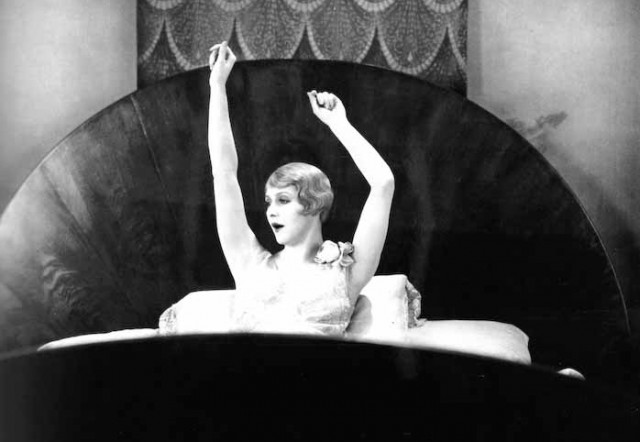
 Loosely based on a Noël Coward play that was recently made into a film starring Colin Firth, Jessica Biel, and Kristin Scott Thomas, Alfred Hitchcock’s Easy Virtue is another of the Master of Suspense’s cleverly told melodramas, a risqué tale of a woman unfairly placed in a lurid situation. Isabel Jeans stars as Larita Filton, a loving wife whose husband, Aubrey (Franklin Dyall), has commissioned her portrait by painter Claude Robson (Eric Bransby Williams). Just as Claude makes a play for Larita, she fights him off and Aubrey walks in. He misinterprets the scene, shots ring out, the artist is dead, and Claude files for a highly publicized divorce case in which Larita is found guilty of misconduct. Trying to put her notorious past behind her, she heads for the Mediterranean, where she meets John Whittaker (Robin Irvine), a wealthy mama’s boy who falls instantly in love with her and brings her back to his parents’ country estate. But once there, Whittaker’s nasty mother (Violet Farebrother) and conniving sisters (Dacia Deane and Dorothy Boyd) do everything they can to ruin the relationship, seeking to uncover Larita’s history while also attempting to put her son back together with longtime family friend Sarah (Enid Stamp Taylor). Easy Virtue, which features yet another Hitchcock blonde, is a gripping film about honesty, reputation, individuality, and character as an innocent woman is forced to face undeserved consequences in the superficial world of high society. Hitchcock, who makes his cameo holding a walking stick, gliding past Larita while she sits by a tennis court, includes several wonderful touches involving circles and ovals, from a close-up of a judge’s wig to a shot through a tennis racket’s strings to a dining room dominated by a group of elongated, haloed saints on one wall. Easy Virtue is also one of Hitchcock’s dourest silent melodramas, lacking any comic relief as a wronged woman desperately tries to right her life. Easy Virtue is screening on March 4 at 6:45 as part of the Film Forum series “The Hitchcock 9,” with live piano music by Steve Sterner. “The Hitchcock 9” continues through May 4 with Blackmail, The Pleasure Garden, Champagne, The Farmer’s Wife, The Ring, Downhill, and The Manxman (all featuring Sterner on piano), in conjunction with “The Complete Hitchcock,” which runs through March 27 and includes all of Sir Alfred’s feature narratives. In addition, the Paley Center will be hosting
Loosely based on a Noël Coward play that was recently made into a film starring Colin Firth, Jessica Biel, and Kristin Scott Thomas, Alfred Hitchcock’s Easy Virtue is another of the Master of Suspense’s cleverly told melodramas, a risqué tale of a woman unfairly placed in a lurid situation. Isabel Jeans stars as Larita Filton, a loving wife whose husband, Aubrey (Franklin Dyall), has commissioned her portrait by painter Claude Robson (Eric Bransby Williams). Just as Claude makes a play for Larita, she fights him off and Aubrey walks in. He misinterprets the scene, shots ring out, the artist is dead, and Claude files for a highly publicized divorce case in which Larita is found guilty of misconduct. Trying to put her notorious past behind her, she heads for the Mediterranean, where she meets John Whittaker (Robin Irvine), a wealthy mama’s boy who falls instantly in love with her and brings her back to his parents’ country estate. But once there, Whittaker’s nasty mother (Violet Farebrother) and conniving sisters (Dacia Deane and Dorothy Boyd) do everything they can to ruin the relationship, seeking to uncover Larita’s history while also attempting to put her son back together with longtime family friend Sarah (Enid Stamp Taylor). Easy Virtue, which features yet another Hitchcock blonde, is a gripping film about honesty, reputation, individuality, and character as an innocent woman is forced to face undeserved consequences in the superficial world of high society. Hitchcock, who makes his cameo holding a walking stick, gliding past Larita while she sits by a tennis court, includes several wonderful touches involving circles and ovals, from a close-up of a judge’s wig to a shot through a tennis racket’s strings to a dining room dominated by a group of elongated, haloed saints on one wall. Easy Virtue is also one of Hitchcock’s dourest silent melodramas, lacking any comic relief as a wronged woman desperately tries to right her life. Easy Virtue is screening on March 4 at 6:45 as part of the Film Forum series “The Hitchcock 9,” with live piano music by Steve Sterner. “The Hitchcock 9” continues through May 4 with Blackmail, The Pleasure Garden, Champagne, The Farmer’s Wife, The Ring, Downhill, and The Manxman (all featuring Sterner on piano), in conjunction with “The Complete Hitchcock,” which runs through March 27 and includes all of Sir Alfred’s feature narratives. In addition, the Paley Center will be hosting 

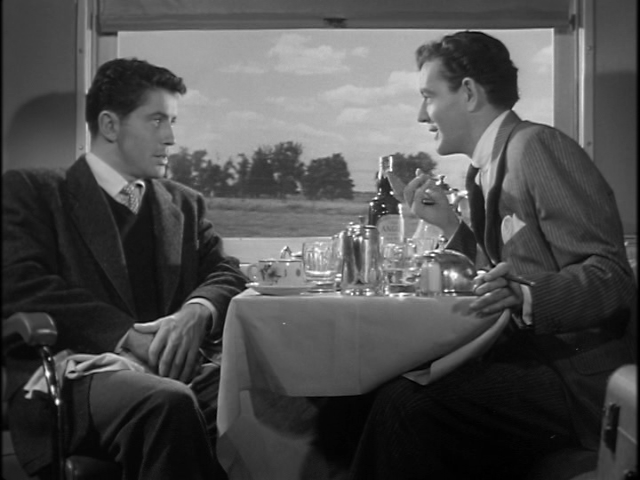
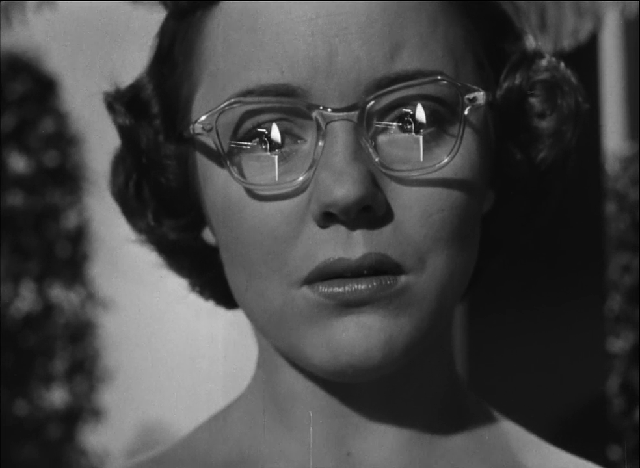
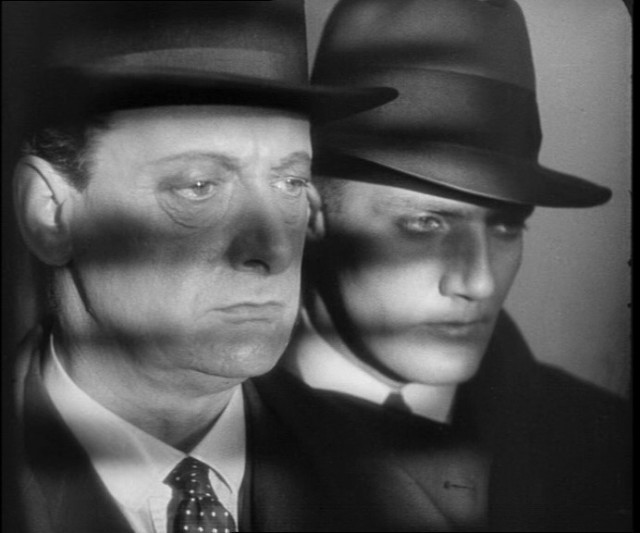
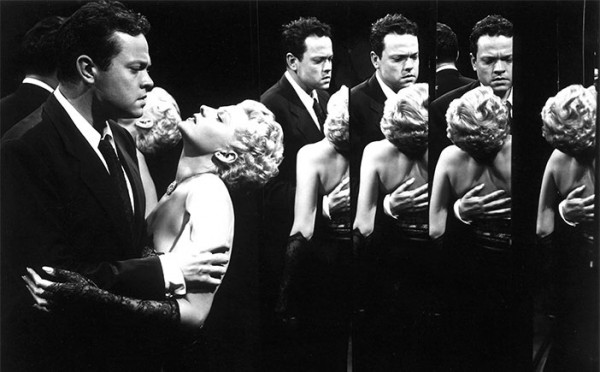
 Orson Welles followed up the creepy black-and-white Holocaust thriller,
Orson Welles followed up the creepy black-and-white Holocaust thriller,